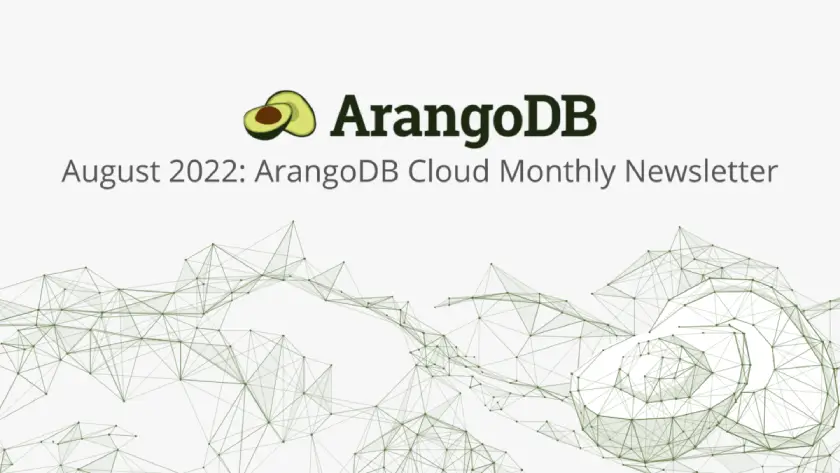ArangoGraph Now Available on AWS Marketplace
Estimated reading time: 1 minute
Today we are excited to announce that ArangoGraph, the ArangoDB Managed Service, is available for purchase in the AWS Marketplace. With this announcement, ArangoGraph can now be purchased directly via both AWS and GCP.
The AWS Marketplace provides an extensive catalog of software solutions for users to easily explore, test, buy, and deploy on AWS. If you’re an AWS customer, here’s what this announcement means for you:
(more…)Graph and Entity Resolution Against Cyber Fraud
Estimated reading time: 4 minutes
With the growing prevalence of the internet in our daily lives, the risks of malware, ransomware, and other cyber fraud are rising. The digital nature of these attacks makes it very easy for fraudsters to scale by creating thousands of accounts, so even if one is identified, they can continue their attacks.
In this blog post, we will discuss how graph and entity resolution (ER) can help us battle these risks across different industries such as healthcare, finance, and e-commerce (for example, the US healthcare system alone can save $300 billion a year with entity resolution). You will also receive hands-on experience with entity resolution on ArangoDB.
Why Should You Care About SOC 2?
And by the way, ArangoDB is SOC 2 compliant!
Estimated reading time: 3 minutes
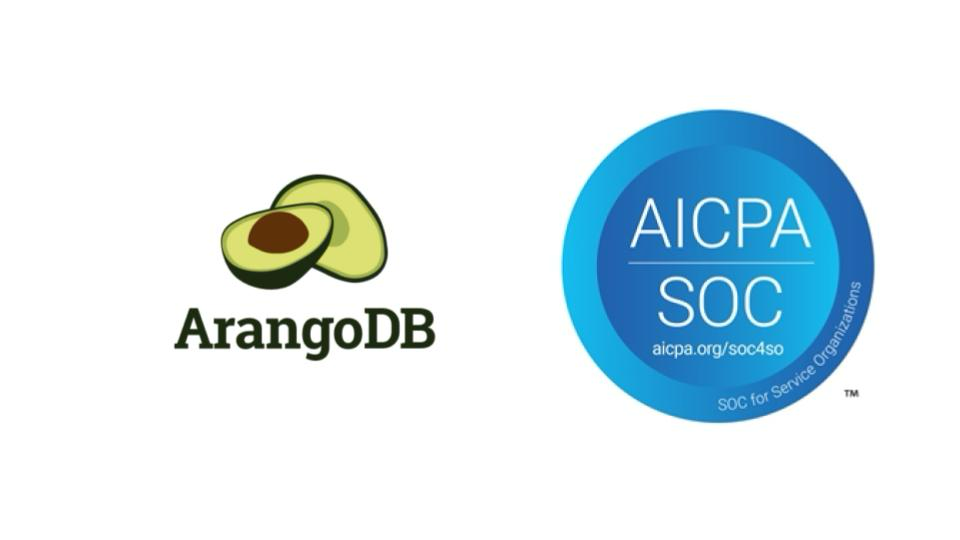
While driving along California’s Highway 101 and its billboards, compliance and SOC 2 seem to be an omnipresent – yet challenging – topic. But is it really? And if so, why? In this blog post, we want to share why and how ArangoDB has become SOC 2 compliant.
Read moreAugust 2022: ArangoDB Cloud Monthly Newsletter
Estimated reading time: 2 minutes
New: Private endpoint support for all major cloud providers
Private endpoints allow the connection from your application to your ArangoDB Cloud deployment to stay entirely within the cloud service provider’s network and remain unexposed to the public internet.
Last year we introduced support for private endpoints for Microsoft Azure. In June, we announced that private endpoints were GA for ArangoDB Cloud deployments running on AWS. Today, we are happy to share that we now support all three major cloud providers with the addition of private endpoints for Google Cloud Platform.
Please note: the private endpoint feature is only available for enterprise-tier ArangoDB ArangoGraph organizations. Contact your account executive to know more about this feature, or get in touch with us here.
(more…)Introducing ArangoDB 3.9 – Graph Meets Analytics
Estimated reading time: 4 minutes
We are proud to announce the GA release of ArangoDB 3.9!
Congrats to the team and community for the latest ArangoDB release 3.9! ArangoDB 3.9 is focused on extending the capabilities of advanced Analytics and especially at scaling Graph use cases even further. In the remainder of this blog post, we will dive further into some of the features including Hybrid SmartGraphs, new AQL functions, new ArangoSearch Analyzer, and various other performance and user experience improvements.
(more…)Introducing ArangoDB 3.8 – Graph Analytics at Scale
Estimated reading time: 5 minutes
We are proud to announce the GA release of ArangoDB 3.8!
With this release, we improve many analytics use cases we have been seeing – both from our customers and open-source users – with the addition of new features such as AQL window operations, graph and Geo analytics, as well as new ArangoSearch functionality.
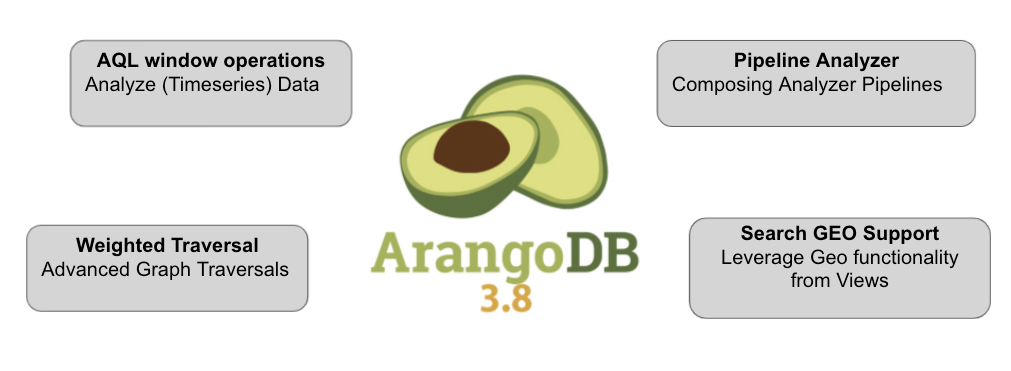
If you want to get your hands on ArangoDB 3.8, you can either download the Community or Enterprise Edition, pull our Docker images, or start a free trial of our managed service ArangoGraph.
As with any release, ArangoDB 3.8 comes with many improvements, bug fixes, and features. Feel free to browse through the complete feature list in the release notes to appreciate all the work which has gone into this release.
In this blog post, we want to focus on some of the highlights including AQL Window Operations, Weighted Graph Traversals, Pipeline Analyzer and Geo Support in ArangoSearch.
AQL Window Operations
The WINDOW keyword can be used for aggregations over related rows, usually preceding and / or following rows.
The WINDOW operation performs a COLLECT AGGREGATE-like operation on a set of query rows. However, whereas a COLLECT operation groups multiple query rows into a single result group, a WINDOW operation produces a result for each query row:
- The row for which function evaluation occurs is called the current row
- The query rows related to the current row over which function evaluation occurs comprise the window frame for the current row
There are two syntax variants for WINDOW operations:
- Row-based (evaluated across adjacent documents)
- Range-based (evaluated across value or duration range)
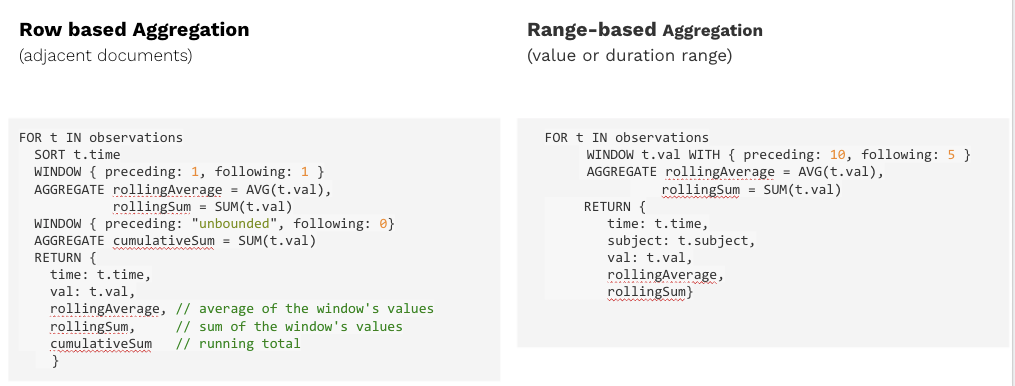
Weighted Graph Traversals
Graph traversals in ArangoDB 3.8 support a new traversal type, "weighted", which enumerates paths by increasing weights.
The cost of an edge can be read from an attribute which can be specified with the weightAttribute option.
FOR x, v, p IN 0..10 OUTBOUND "places/York" GRAPH "kShortestPathsGraph"
OPTIONS {
order: "weighted",
weightAttribute: "travelTime",
uniqueVertices: "path"
}As the previous traversal option bfs was deprecated, the new preferred way to start a breadth-first search from now on is with order: "bfs". The default remains depth-first search if no order is specified, but can also be explicitly requested with order: "dfs".
ArangoSearch Pipeline & AQL Analyzers

ArangoSearch added a new Analyzer type, "pipeline", for chaining effects of multiple Analyzers into one. This allows for example to combine text normalization for a case insensitive search with n-gram tokenization, or to split text at multiple delimiting characters followed by stemming.
Furthermore, the new Analyzer type "aql"is capable of running an AQL query (with some restrictions) to perform data manipulation/filtering. For example, a user can define a soundex analyzer for phonetically similar term search:
arangosh> var a = analyzers.save("soundex", "aql", { queryString: "RETURN SOUNDEX(@param)" }, ["frequency", "norm", "position"]);Note that the query must not access the storage engine. This means no FOR loops over collections or Views, no use of the DOCUMENT() function and no graph traversals.
Enhanced Geo support in ArangoSearch
While AQL has supported Geo indexing and functions for a long time, ArangoDB 3.8 adds Geo support also to ArangoSearch with the GeoJSON and GeoPoint analyzer and respective ArangoSearch Geo functions:
- Geo_Contains()
- Geo_Distance()
- Geo_In_Range()
- Geo_Intersects()
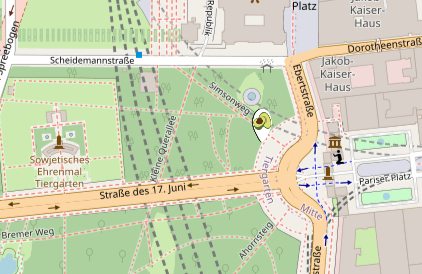
NB: Check out the community ArangoBnB project to learn more about Geo capabilities in ArangoSearch.
Improved Replication Protocol
For collections created with ArangoDB 3.8, a new internal data format is used that allows for a very fast synchronization of differences between the leader and a follower that is trying to reconnect.
The new format used in 3.8 is based on Merkle trees, making it more efficient to pin-point the data differences between the leader and a follower that is trying to reconnect.
The algorithmic complexity of the new protocol is determined by the amount of differences between the leader and follower shard data, meaning that if there are no or very few differences, the getting-in-sync protocol will run very fast. In previous versions of ArangoDB, the complexity of the protocol was determined by the number of documents in the shard, and the protocol required a scan over all documents in the shard on both the leader and the follower to find the differences.
The new protocol is used automatically for all collections/shards created with ArangoDB 3.8. Collections/shards created with earlier versions will use the old protocol, which is still fully supported. Note that such “old” collections will only benefit from the new protocol if the collections are logically dumped and recreated/restored using arangodump and arangorestore.
Other notable features
- UI and Visualizer Improvements
- Default per-query and optional global memory limits
- Metrics 2.0 version and user specific Grafana dashboards
- Arangodump improvements
- JavaScript security
- AQL bit functions
- Sorting performance improvements
- Agency Memory consumption
- Hardware acceleration for Encryption
Upgrade
Upgrading to ArangoDB 3.8 can be performed with zero downtime following the upgrade instructions for your respective deployment option. Please note our recent update advisory and update either to a newer 3.6/3.7 version or 3.8 if you are running an affected version.
ArangoGraph
The easiest way to give ArangoDB 3.8 a spin is ArangoGraph, ArangoDB’s managed service in the cloud.
Feedback
Feel free to provide any feedback either via our Slack channel or mailing list.
Special Edition Lunch Session
Join Simran Spiller on August 4th for a special Graph and Beyond Lunch Session #15.5 - Aggregating Time-Series Data with AQL.
The new WINDOW operation added to AQL in ArangoDB 3.8 allows you to compute running totals, rolling averages, and other statistical properties of your sensor, log, and other data. You can aggregate adjacent documents (or rows if you will), as well as documents in value or duration ranges with a sliding window.
In this lunch and learn session, we will take a look at the two syntax variants of the WINDOW operation and go over a few examples queries with visual explanations.
Hear More from the Author
Continue Reading
Introducing Developer Deployments on ArangoDB ArangoGraph
Introducing Developer Deployments on ArangoDB ArangoGraph
Estimated reading time: 4 minutes
Today we’re announcing the introduction of Developer deployments as a beta feature on the Oasis platform.
In this blog post, we’ll tell you what Developer deployments are, what you can do with them, what you should not do with them, and how to get started.
What are Developer deployments?
Since we launched Oasis, a deployment on Oasis has always been a highly available ArangoDB cluster. That is great for high availability, and it allows you to scale your deployment to incredibly large sets of data.
Many customers have told us that they would like something a bit smaller that can be used by an individual developer, or better yet, let every developer have their own deployment.
That request is exactly what we are answering with the introduction of Developer deployments.
A Developer deployment consists of only a single server on a single node.
With that configuration, there is obviously no high availability, and scaling is limited to vertical scaling of that single server.
For those reasons, Developer deployments are not suitable for any kind of production environment, and because of that, Developer deployments are excluded from audit logs.
Support is given for Developer deployments on a best effort basis. It is not possible to buy an additional support plan with a Developer deployment.
All other features, like backups, full encryption, and Foxx, are fully available.
What can you do with a Developer deployment?
Developer deployments are ideal when you want to experiment with ArangoDB, or are just learning its features.
They are also ideal for (small scale) analytics experiments. You can quickly load your data into them, configure your graphs and perform your analysis.
The lack of high availability is usually not a problem for such experiments.
Of course, you can also give a single Developer deployment to all of your developers to develop an application against. When you do so, you have to keep in mind that there are small differences between a single instance of ArangoDB and a cluster.
Within Oasis, we have reduced these changes by requiring the use of the WITH statement in exactly the same way that a cluster deployment requires that keyword (from ArangoDB version 3.7.12 and higher).
How are Developer deployments priced?
A Developer deployment launched in AWS Ohio is available for as little as $ 0.058 per hour or $42.2 per month. The same deployment with General CPU is available for $ 0.068 per hour.
Similar to our OneShard and Sharded deployments, network traffic and backup storage is charged separately.
For more details on pricing, please log in to the Oasis dashboard and visit the Pricing page.
What not do with Developer deployments
As mentioned before, Developer deployments are not highly available and can be restarted at any time. For that reason, you should not use them for any kind of production environment.
Since we strongly believe that a staging environment should reflect the production environment as much as possible, you should also not use a Developer deployment for a staging environment.
How to get started with Developer deployments
To create a Developer deployment on Oasis, log in to your ArangoDB Oasis account on cloud.arangodb.com.
Then go to your project and click on New Deployment.

Enter all the normal fields such as the name of your deployment and select a cloud provider & region.
Then click on the Developer (beta) button to choose the Developer model.
![]()
Select the size of your deployment and click on Create.

Your Developer deployment will now bootstrap.
Once that has finished, you’ll receive an email and can start to use your deployment.
Hear More from the Author
OCB: Challenges in Building Multi-Cloud-Provider Platform With Kubernetes
Getting Started with ArangoDB Oasis
Continue Reading
ArangoML Part 1: Where Graphs and Machine Learning Meet
A story of a memory leak in GO: How to properly use time.After()
ArangoDB 3.7 BETA – Graph & Search Engine Upgrades
Estimated reading time: 4 minutes

After many weeks of designing, implementing, and testing we are happy to announce that all the exciting features are now in place for ArangoDB 3.7. We are proud to share a 3.7 Beta 1 preview release, which provides an opportunity for you to try out all upcoming features before the final release. On the ArangoDB technical preview page you’ll find the Beta 1 packages for the Community and Enterprise Editions, so you can install, play and test locally.
(more…)Azure Now Generally Available on ArangoDB Oasis
Estimated reading time: 6 minutes
ArangoDB ArangoGraph, the cloud service of ArangoDB, has reached an important milestone. We are glad to announce that Azure support is generally available in ArangoDB ArangoGraph as of today!
Currently Azure is supported in the following regions:
- West US, Washington
- East US, Virginia
- Central Canada, Toronto
- UK, London
- West Europe, Netherlands
Take Alpha 2 of the upcoming ArangoDB 3.7 for a spin!
Estimated reading time: 8 minutes
We are 11 weeks into the development of ArangoDB 3.7 and want to give you yet another opportunity to try out the upcoming features before the release. On our technical preview page, you’ll find the Alpha 2 packages for the Community and Enterprise Edition.
This Alpha 2 comes with pretty neat features and improvements and we hope to get your early feedback!
This is particularly helpful for us to adjust our development in terms of solving real-world problems for you and ease-of-use for the new capabilities like: Read more
Get the latest tutorials,
blog posts and news:
Thanks for subscribing! Please check your email for further instructions.
 Skip to content
Skip to content 
